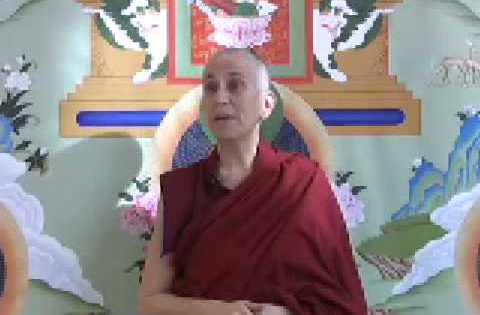Bodhisattva Path
How to become a bodhisattva, a great being intent on attaining full awakening for the benefit of all beings.
All Posts in Bodhisattva Path

Verse 34-1: Unkind to wrong views
How to think when we see other people's kindness that is not reciprocated.
View Post
Verse 33-4: The kindness of the Three Jewels
Contemplating the kindness of the Buddha and those who practiced and taught through the centuries…
View Post
Verse 33-3: Had we not met the Dharma….
Contemplating the kindness of the Three Jewels by considering what direction our lives would have…
View Post
Verse 33-2: The kindness of others
Contemplating the kindness of other sentient beings by considering how we would not be alive…
View Post
Verse 32-5: Who is sick?
Working with illness and pain by considering who is the "I" who is experiencing the…
View Post
Verse 32-4: Aging gracefully
How attachment to the body—it's appearance and physical abilities— makes it so difficult to accept…
View Post
Verse 32-3: Renouncing suffering
The importance of generating renunciation and really getting a feel for wanting to be free…
View Post
Verse 32-2: Working with sickness
How to work with the mind when we are sick and transform illness into the…
View Post
Verse 32-1: Being free from illness
How the body, by its very nature, gets sick. The only way to avoid illness…
View Post
Verse 31: Seeing someone suffering
How compassion differs from personal distress and how to cultivate compassion without falling to apathy.…
View Post
Verse 30-2: The bliss of a buddha
The meaning of the term "the bliss of the Buddha." Considering the removal of the…
View Post